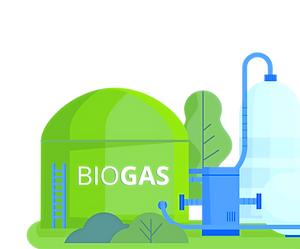Utilizing waste in Biogas and Waste-to-Energy plants
AGET’S biogas facilities use bio-degradable waste materials such as agricultural and forestry residues, as well as waste from industry and farms as fuel to generate renewable energy and biofertilizer without combustion.
Waste-to-Energy plants

Whilst landfilling provides a straightforward means of waste disposal, it incurs harmful environmental impacts, a breeding ground for hazardous toxins such as leachate and greenhouse gases, that pollute the air soil and groundwater.
Landfills have an effect on Climate Change. One tonne of biodegradable waste can produce about 400–500 cubic meters of landfill gas, consisting primarily of methane and carbon dioxide. Methane is a greenhouse gas that is 25x more potent than carbon dioxide and directly contributes to global warming and climate change.
This is where Biofuel comes in
Innovative technological advances and the increasing desire for alternative energy sources have accelerated both the production and usage of biofuels.
Bioenergy produced from the landfill sites can be used in many ways including electricity and biochar production, all whilst destroying methane and avoiding elevated GHG contributions.
Biomass is available in large amounts in Africa and can be converted to renewable fuel. This allows countries to become less dependent on traditional fossil fuel sources and offers a more sustainable and environmentally friendly alternative to burning or burying trash in landfills.

Copyright © 2022 Africa Green Energy Technologies, All Rights Reserved.